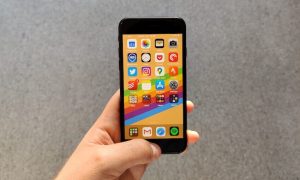WhatsApp remains the most popular app for personal messaging for Indian users, since close to 400 million users rely on this daily. Many of us are part of large groups on WhatsApp with our family, friends and colleagues. And inevitably a lot of photos and videos are shared on these groups. But more photos and videos also means less storage on your phone. Here are some tips on how to manage your phone storage.
Media upload quality
WhatsApp lets you decide quality options while sending photos and videos. The default and recommended setting is ‘Auto’. Under this setting, the photos gets compressed. This means the photos and videos you send can sometime appear too grainy. However, WhatsApp lets you choose ‘Best quality’ as an option as well. Under this option, photos and videos sent are typically larger in size. If you are using WiFi and wish to forward the best quality in video and photos, then you can change the settings to ‘Best quality’.
Users can change Media Upload quality in the settings. Here it is seen on iOS. (Image credit: Express photo)
There’s also Data Saver, which will compress it further. If you have less data or a weak network, you can use Data Saver to send photos and videos.
To change the quality of these videos and photos, click on Settings on the Android app and iOS. On Android, you can access Settings by tapping the three dot menu on the top, next to the magnifying glass symbol. Now go to Storage and Data. You will see an option for Media Quality upload. Tap on it, and choose the option. On Android, it says Photo upload quality in the Settings.
On iOS, go to Settings>Storage and Data> Media Upload Quality. Tap on it, and then choose from the options mentioned according to preference.
Media Auto-downloads
This is another setting worth checking out, especially if your WhatsApp account has too many images, videos and PDFs coming in daily. They can quickly take up device storage. Keeping auto-download off ensures better storage management. Go to Settings on both Android and iOS, followed by ‘Storage and Data’ and see the menu for Media Auto-download.
On Android, the settings are as follows, ‘When using mobile data’, ‘When connected to Wi-Fi’ and ‘When roaming’. You can tap on each of these to see which type of media you want automatically downloaded depending on the network. If you tap each setting, it will show a menu of Photos, Audio, Video, Documents. You can tick mark the ones you want to automatically download.
Our recommendation, though, is keep everything turned off for auto-downloads. This will ensure storage space on your Android device remains free, especially if you are part of many groups.
The media auto-download setting is seen on Android. (Image credit: Express photo)
Or you could allow for pictures and videos to be auto-downloaded only on WiFi. Do remember that some PDFs are very heavy and so it is best to keep auto-downloads off for them.
On iOS, the Media Auto-download feature looks a bit different. It is part of the Storage Data option in Settings, but the sub-sections are called Photos, Audio, Video and Documents. You can choose from Never, WiFi and WiFi+cellular for each type of media file. You always press the reset Auto-download Settings as well. We recommend keeping auto-download to never for most media.
Managing Storage for each chat
If you’ve ever seen your WhatsApp chat backup and noticed that is running into a few GBs worth of data, it is time to access this setting. But depending on how crucial WhatsApp is to your daily work, it might be overwhelming to manage this properly. However, we could recommend you do take a look at this.
On iOS, just go to Settings> Storage and Data> Manage Data. You will see the amount of ‘Used Data’ and how much data is being occupied by each chat. WhatsApp will also let you review media files larger than 5MB and delete them quickly. There’s also a forwarded many times section, which includes videos, photos, documents with this tag. Once again, you can delete these quickly.
Managing Storage for WhatsApp chats. The setting as it appears in iOS. It is similar on Android too. (Image credit: Express Photo)
Further down, you will see how much data each chat is occupying and you can clear this up as well. WhatsApp will let you delete large media files from each chat and thus save data on your device.
On Android, the setting can be accessed by going to ‘Manage Storage’ in the ‘Storage and Data.’ Here you will see the total amount of data for each chat, along with files larger than 5MB, ‘forwarded many times’ as well. You can now delete files occupying a lot of space on your phone.
The ‘Save to Camera roll’ option on iOS. (Express photo)
Save to Camera Roll
This is another setting you might want to take note of, if you have not already done so. If you have this option turned on, all videos and photos you receive will get saved to the camera roll, which frankly no one wants. On iOS, go to settings and Chats and you will see an option for Save to Camera Roll. Make sure you turn it off. This will ensure your iCloud space is not occupied by random WhatsApp forwards.
On Android, go to the Settings section, followed by Chats and then go to Media Visibility. Turn it off. This way media which is downloaded is not going to get saved to your phone’s photo gallery app.





































